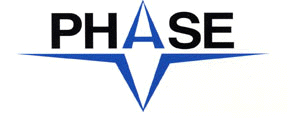MARCIA A. TESTA, ALEXANDER TURCHIN, MAXWELL SU, DONALD C. SIMONSON, Boston, MA
Impact of Patient-Centered Factors on Comparative Effectiveness of Initial Therapies in Treatment-Naïve T2D
Author Block: MARCIA A. TESTA, ALEXANDER TURCHIN, MAXWELL SU, DONALD C. SIMONSON, Boston, MA
The 2017 ADA and AACE consensus statements recommend individualizing A1C targets based on patient-centered demographic, clinical and socio-economic factors, and also starting initial therapy with metformin. We used benchmarking algorithms to predict personalized A1C outcomes and estimate treatment comparative effectiveness among diabetes therapies using electronic health records (EHR) collected from 233,627 primary care adult diabetes patients between 2000 and 2014, with 14,019 qualifying as treatment-naïve prior to or at the first EHR observation. EHR analyses were conducted at Partners HealthCare, an integrated healthcare delivery network in eastern Massachusetts. Initial monotherapy regimens were metformin (MET) 63.5%, sulfonylurea (SU) 12.5%, insulin 7.7%, thiazolidinediones (TZD) 1.5% and all other agents < 1%; combination therapies were 14%. The monotherapy MET and SU subgroup (n=10,466) was 53% female; 64% white, 15% black, 8.5% Hispanic; mean± SD age = 59 ± 13 yrs; A1C = 8.6 ± 1.8%; BMI = 33.2 ± 6.5 kg/m2; and median income = $67,119. Of these, 14.8% failed to reach A1C < 7%, and 9.0% did not reach A1C < 8%, prior to a first change in regimen. Logistic regression and survival models for achieving target A1C adjusting for baseline sex, age, race/ethnicity, income, BMI, hypertension, A1C and eGFR were predictive (p < 0.001). SU had lower odds of reaching A1C < 7% vs. MET [OR (95% CI) = 0.69 (0.59, 0.86); HR = 0.60 (0.57, 0.62)], p < 0.001. In the full sample (n = 14,019), all other regimens also had lower odds of A1C < 7% compared to MET [OR (95% CI): Insulin 0.28 (0.24, 0.33); Combinations 0.32 (0.29, 0.36); DPP-4i 0.35 (0.18, 0.67); Other 0.41 (0.22, 0.75); TZD 0.57 (0.39, 0.82); SU 0.72 (0.62, 0.84)]. Patient-centered factors contributed substantially to the heterogeneity of A1C treatment response as benchmarked against metformin; however, even after adjustment, metformin was more effective as initial therapy in T2D treatment naïve patients compared to all other treatments.
To view this abstract on the American Diabetes Association Website, Click Here – Abstract 1520-P
To view the e-poster on the American Diabetes Association Website, Click Here – ePoster 1520-P


